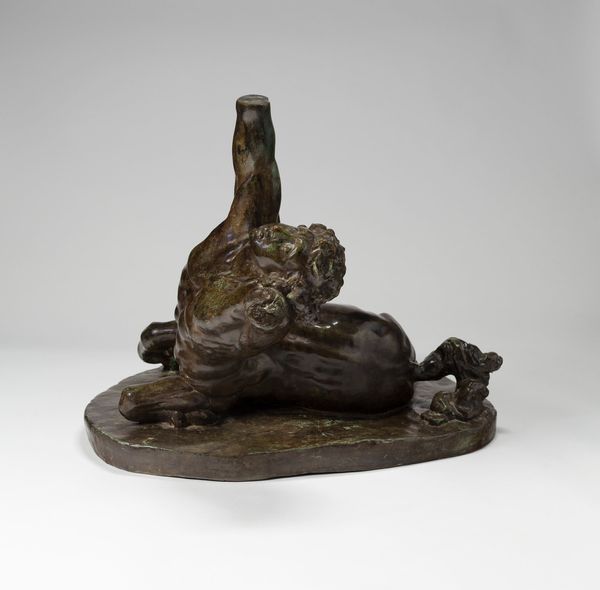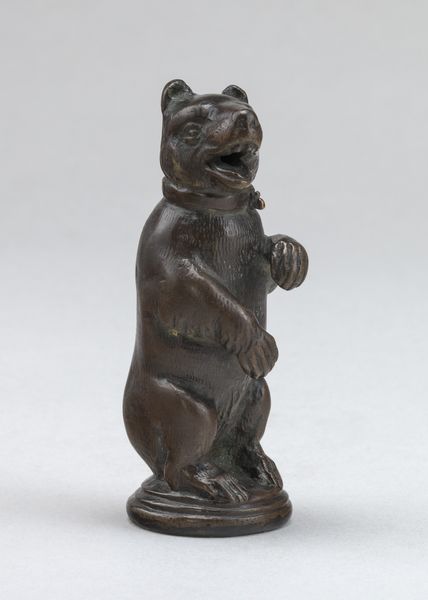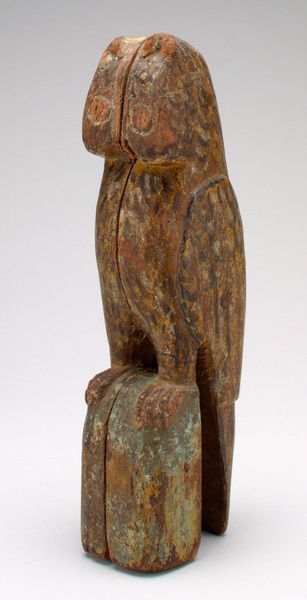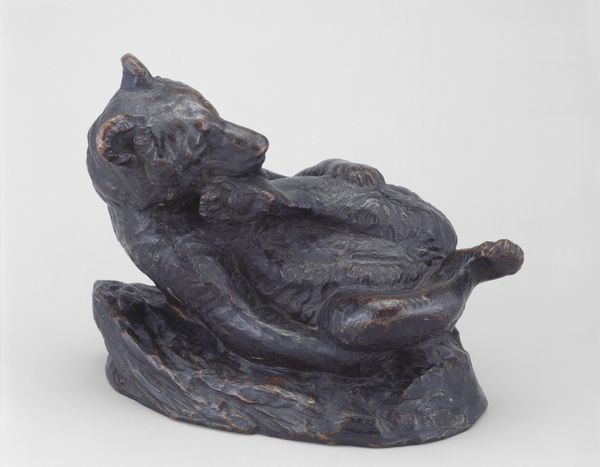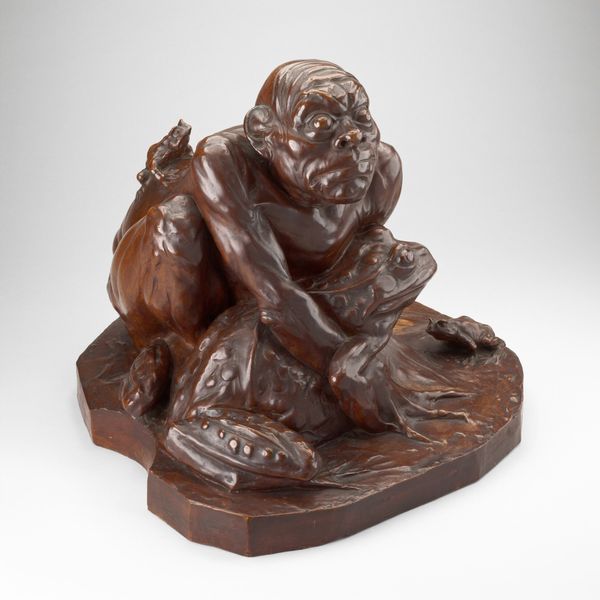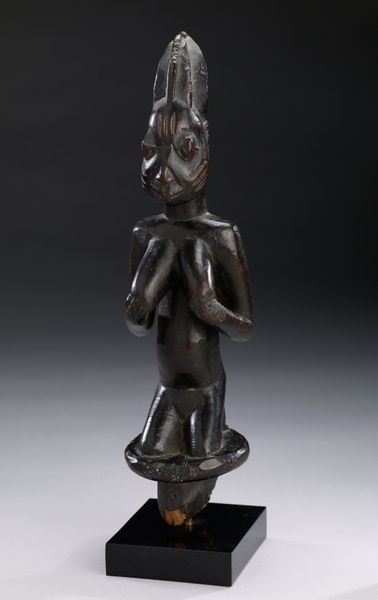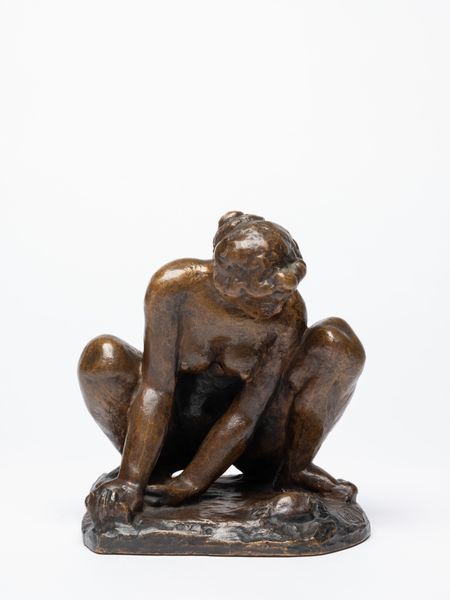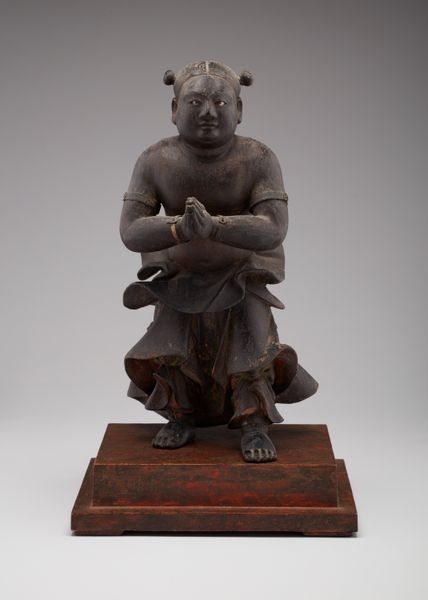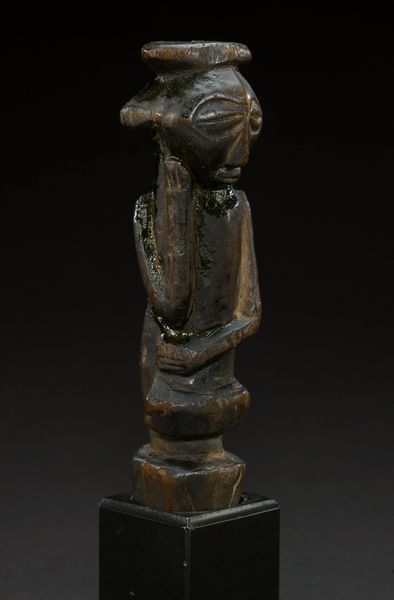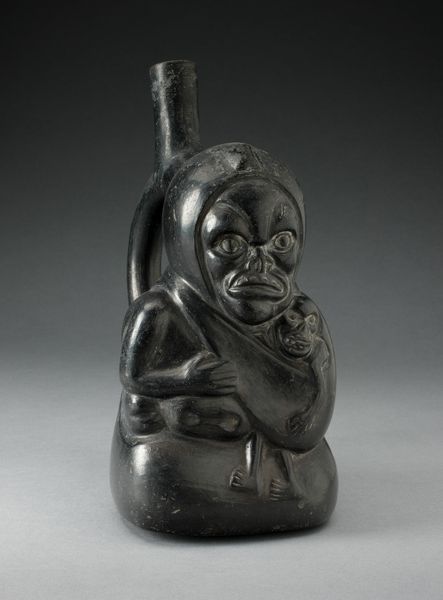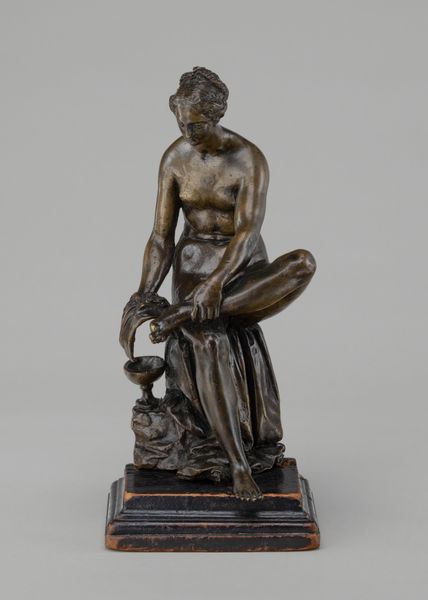
pigment, assemblage, bronze, sculpture
#
pigment
#
animal
#
assemblage
#
sculpture
#
bronze
#
figuration
#
sculpting
#
sculpture
Dimensions: 8 3/8 x 3 1/8 x 5 1/8 in. (21.27 x 7.94 x 13.02 cm)
Copyright: Public Domain
Curator: Here we have a peculiar sculpture from around 1886 entitled "Monkey and Cocoanut," credited to E. Stevens and residing here at the Minneapolis Institute of Art. Editor: It strikes me as unsettling, this almost mournful monkey hunched over his prize. There's a gravity here that exceeds its small scale. Curator: Indeed. It's rendered in bronze with some pigment added, creating a sense of texture and wear. One might be interested in its manufacturing: how Stevens combined bronze with pigment for this detailed finish and to what extent the hand of the artist is present, versus the division of labor typical of bronze foundries at the time. Editor: And what sort of societal expectations of representation were at play? The piece exists, I think, at a nexus of animal representation and cultural perception of the "exotic," especially given the colonial context in which it was produced. Was this meant to be a commentary on animal instinct, or does it reflect more troubling human attitudes towards otherness? Curator: The way the bronze captures the monkey's almost pleading expression… the consumption of such novel objects surely reflected specific networks of trade. The making would rely upon and reinforce particular roles in society; in particular, how sculpture participates in a larger circuit of capitalist exchange, revealing inequalities through its physical production and later commodification. Editor: But to think, as well, about who would purchase this object. It likely circulated within elite circles, becoming a symbol, maybe, of worldliness, but one entangled in problematic frameworks related to race, class, and empire. The positioning of the animal itself—caught in a posture of near-begging—feels uncomfortably close to stereotypes levied against marginalized human groups at the time. Curator: Understanding that history informs the layers of cultural significance now. Looking closer, the texture around the face of the monkey, the evidence of additive and subtractive sculpting, can suggest much about the artistic labor involved. I see something crafted. Editor: Which is why holding both those making processes, AND their troubling meanings in the work is the tightrope we're on as art interpreters. Curator: Ultimately, it’s that complexity – in method and meaning – which stays with you. Editor: Right, a compelling artifact in which, hopefully, we keep questioning who the 'us' is and where the 'other' lives.
Comments
No comments
Be the first to comment and join the conversation on the ultimate creative platform.

